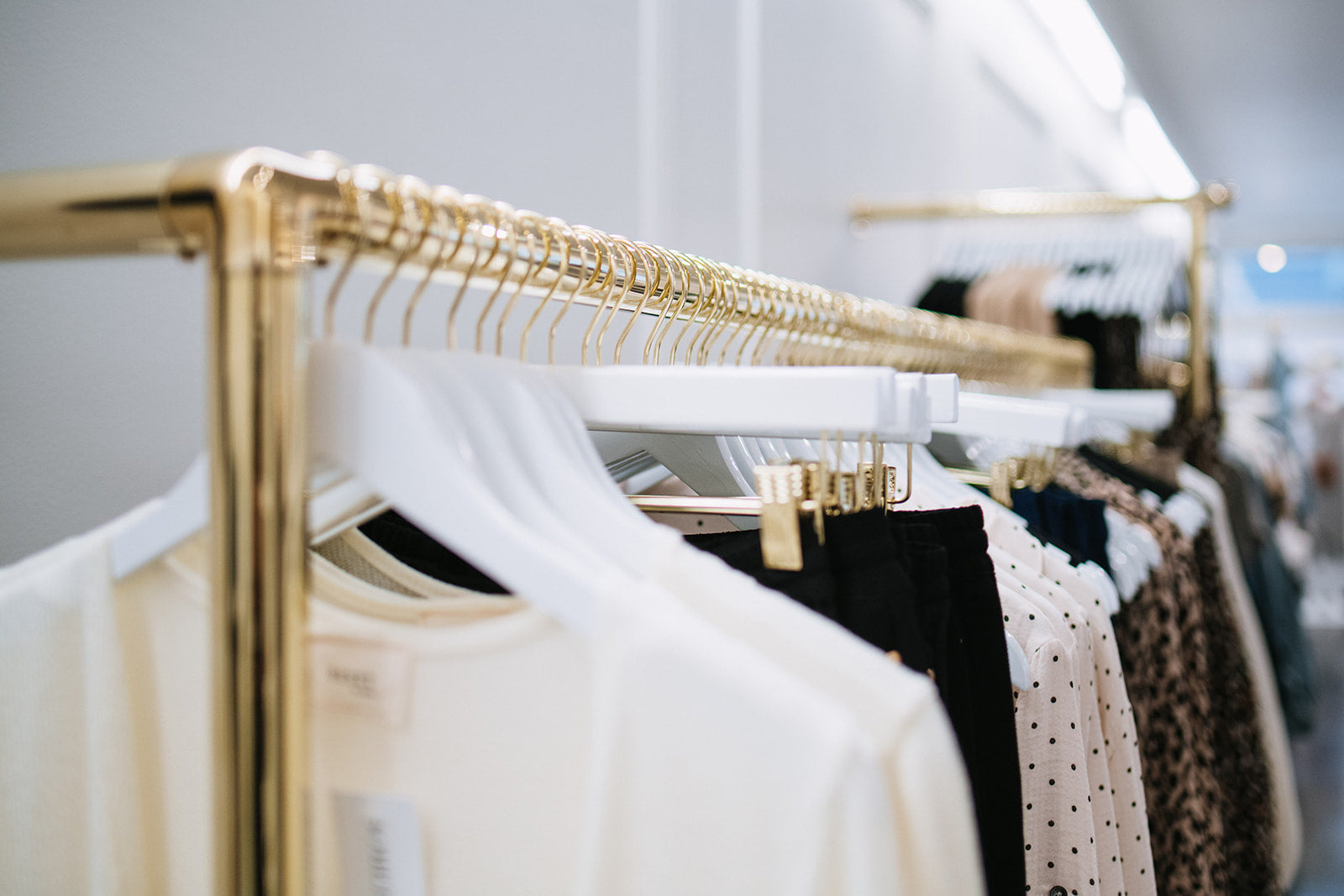The Effect of Social Media on Today's Boutique Fashion Trends
The Effect of Social Media on Today's Boutique Fashion Trends
Blog Article
Sustainable Fashion: Exactly How Eco-Friendly Apparel Is Forming the Future of Style
As the fashion business faces increasing analysis over its environmental influence, the rise of lasting style uses an appealing option that straightens style with environmental duty. Employing cutting-edge materials such as recycled fibers and plant-based textiles, along with advanced methods like electronic and 3D printing, designers are redefining what it implies to be fashionable in the modern-day age. Concurrently, the growing appeal of upcycling and thrift society is promoting a change in the direction of a circular economy. How does this movement genuinely affect the future trajectory of fashion, and what challenges lie ahead in its prevalent adoption?
Cutting-edge Lasting Products
As the fashion business faces its ecological effect, cutting-edge sustainable products have actually arised as an essential option for minimizing ecological footprints. Among one of the most appealing materials are those originated from all-natural, sustainable resources, such as natural cotton, hemp, and bamboo. These materials not just decrease dependency on nonrenewable fuel sources however additionally minimize unsafe chemical use and water consumption. Organic cotton, for example, utilizes significantly much less water than standard cotton and gets rid of the requirement for poisonous chemicals, thus maintaining soil health and biodiversity.
Along with plant-based products, developments in biofabrication have actually caused the development of lab-grown fabrics. Mycelium natural leather, originated from mushroom roots, provides a biodegradable and functional alternative to animal leather. Its manufacturing results in significantly lower carbon discharges and water use, making it a more lasting alternative for designer seeking to line up with environmentally friendly practices.
Recycled materials are also acquiring traction, with polyester made from recycled plastic bottles standing for a substantial innovation. This technology not only diverts plastic waste from land fills and seas however likewise reduces energy consumption compared to generating virgin polyester. Together, these materials emphasize the capacity for a more lasting garment industry, leading the way for eco conscious style and manufacturing.
Eco-Conscious Manufacturing
Structure on the developments in lasting products, the style industry is also re-evaluating its production processes to further reduce environmental effect. Secret techniques include minimizing water usage, minimizing carbon emissions, and removing unsafe chemicals.
Another essential aspect is the decrease of toxic chemicals commonly used in dyeing and finishing fabrics. Eco-conscious suppliers are shifting in the direction of plant-based dyes and waterless dyeing innovations, which not only guard neighborhood ecological communities however likewise boost worker safety. Advancements like digital printing lower textile waste and power usage, providing a cleaner alternative to traditional approaches.
With the development of blockchain innovation, firms can now give in-depth understandings right into their supply chains, making certain eco friendly and ethical practices at each action. As the demand for eco-conscious items grows, makers are obliged to introduce, ensuring that the future of style is both sustainable and trendy.
The Rise of Upcycling
Upcycling, a transformative method in sustainable fashion, includes artistically repurposing discarded products right into brand-new, high-grade products. This cutting-edge strategy not only decreases waste however additionally lessens the demand for raw products, therefore reducing the ecological impact of garments manufacturing. By reconstructing and reimagining existing products, developers and style brands are able to infuse originality right into their collections while promoting ecological responsibility.

Moreover, the upcycling motion has actually equipped independent developers and little businesses, who typically lead in development click to read more due to their agility and creativity. By profiting from the bountiful schedule of extra products, these entities contribute to a circular economic climate, demonstrating that style can be both lasting and elegant. Via upcycling, the sector takes substantial strides in the direction of a more responsible and conscious future.
Thrift Culture's Effect
The burgeoning second hand culture considerably reshapes the landscape of lasting fashion, highlighting the value of mindful consumption. This cultural change encourages customers to accept used clothing, consequently minimizing the demand for brand-new garment production and reducing environmental impact. Thrift buying not only extends the lifecycle of apparel however also reduces the carbon footprint related to manufacturing, delivering, and getting rid of garments.
An essential element of thrift society is its democratization of style. By using a wide array of styles from numerous periods at economical costs, second hand stores make fashion obtainable to a more comprehensive target market. This ease of access promotes a feeling of uniqueness and creativity, as customers mix and match unique pieces to curate customized closets without contributing to the rapid fashion cycle.
Moreover, thrift culture promotes circularity in vogue, lining up with the principles of a round economic climate. By recirculating garments, the cycle of waste is interfered with, and resources are saved. This method sustains a shift from a direct "take-make-dispose" model to a more sustainable structure. As even more developers and consumers accept thrift society, the fashion business is forced to adapt, incorporating sustainable practices to satisfy the expanding demand for eco-conscious alternatives.

Future Trends in vogue
Style's evolution is significantly formed by sustainability-driven efforts and technological innovations. One famous trend is the rise of digital style, where virtual garments can be used in increased fact environments, dramatically reducing fabric waste.
Additionally, the integration of blockchain modern technology provides new possibilities in transparency and article traceability, permitting customers to validate the sustainability qualifications of their clothes. boutique fashion. This makes certain accountability in supply chains and promotes ethical sourcing practices. 3D printing is yet one more technology that assures to change manufacturing procedures by making it possible for on-demand production, therefore reducing excess stock and waste
Furthermore, the growth of bio-fabricated products, such as lab-grown natural leather and plant-based fabrics, offers lasting alternatives to typical products. These developments lower reliance on animal items and resource-intensive crops. As these modern technologies mature, they are poised to change the fashion landscape, combining design with sustainability. The future of fashion, for that reason, depends on a seamless mix of innovation, technology, and ecological responsibility.
Conclusion
The change of the apparel industry through sustainable methods indicates an essential shift in the direction of ecological responsibility. The integration of innovative materials, eco-conscious manufacturing strategies, and the embracement of upcycling and thrift society emphasizes a my blog dedication to minimizing eco-friendly impacts. As these techniques obtain energy, they redefine the sector's narrative by focusing on lasting and moral options. This development not just lines up style with environmental sustainability yet likewise sets a criterion for future patterns focused on obligation and technology.
As the fashion sector faces increasing examination over its environmental influence, the rise of lasting style supplies an encouraging alternative that lines up style with ecological obligation.As the fashion market grapples with its ecological influence, ingenious sustainable materials have arised as a crucial service for minimizing eco-friendly footprints. Together, these materials highlight the possibility for a more lasting style sector, paving the way for ecologically mindful design and production.
Building on the technologies in lasting materials, the fashion industry is also re-evaluating its production processes to better lower ecological effect. boutique fashion.Upcycling, a transformative technique in lasting style, includes artistically repurposing disposed of materials right into new, high-grade products
Report this page